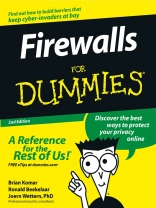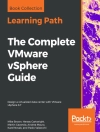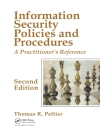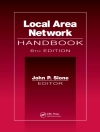What an amazing world we live in! Almost anything you can imagine
can be researched, compared, admired, studied, and in many cases,
bought, with the click of a mouse. The Internet has changed our
lives, putting a world of opportunity before us. Unfortunately, it
has also put a world of opportunity into the hands of those whose
motives are less than honorable. A firewall, a piece of software or
hardware that erects a barrier between your computer and those who
might like to invade it, is one solution.
If you’ve been using the Internet for any length of time,
you’ve probably received some unsavory and unsolicited
e-mail. If you run a business, you may be worried about the
security of your data and your customers’ privacy. At home,
you want to protect your personal information from identity thieves
and other shady characters. Firewalls For
Dummies¯® will give you the lowdown on
firewalls, then guide you through choosing, installing, and
configuring one for your personal or bus iness network.
Firewalls For Dummies¯® helps you
understand what firewalls are, how they operate on different types
of networks, what they can and can’t do, and how to pick a
good one (it’s easier than identifying that perfect melon in
the supermarket.) You’ll find out about
* Developing security policies
* Establishing rules for simple protocols
* Detecting and responding to system intrusions
* Setting up firewalls for SOHO or personal use
* Creating demilitarized zones
* Using Windows or Linux as a firewall
* Configuring Zone Alarm, Black ICE, and Norton personal
firewalls
* Installing and using ISA server and Fire Wall-1
With the handy tips and hints this book provides, you’ll
find that firewalls are nothing to fear – that is,
unless you’re a cyber-crook! You’ll soon be able to
keep your data safer, protect your family’s privacy, and
probably sleep better, too.
Cuprins
Introduction.
Part I: Introducing Firewall Basics.
Chapter 1: Why Do You Need a Firewall?
Chapter 2: IP Addressing and Other TCP/IP Basics.
Chapter 3: Understanding Firewall Basics.
Chapter 4: Understanding Firewall Not-So-Basics.
Chapter 5: ‘The Key Is under the Mat’ and Other
Common Attacks.
Part II: Establishing Rules.
Chapter 6: Developing Policies.
Chapter 7: Establishing Rules for Simple Protocols.
Chapter 8: Designing Advanced Protocol Rules.
Chapter 9: Configuring ‘Employees Only’ and Other
Specific Rules.
Part III: Designing Network Configurations.
Chapter 10: Setting Up Firewalls for SOHO or Personal Use.
Chapter 11: Creating Demilitarized Zones with a Single
Firewall.
Chapter 12: Designing Demilitarized Zones with Multiple
Firewalls.
Part IV: Deploying Solutions Using Firewall Products.
Chapter 13: Using Windows as a Firewall.
Chapter 14: Configuring Linux as a Firewall.
Chapter 15: Configuring Personal Firewalls: Zone Alarm, Black ICE,
and Norton Personal Firewall.
Chapter 16: Microsoft’s Firewall: Internet Security and
Acceleration Server.
Chapter 17: The Champ: Check Point Fire Wall-1 Next
Generation.
Chapter 18: Choosing a Firewall That Meets Your Needs.
Part V: The Part of Tens.
Chapter 19: Ten Tools You Can’t Do Without.
Chapter 20: Ten Web Sites to Visit.
Appendix: Protocol Listings and More.
Index.
Despre autor
Brian Komar is a native of Canada and makes his living as a Public
Key Infrastructure (PKI) consultant, speaker, author, and trainer.
Brian speaks at conferences around the world on network design and
security topics. His consulting practice focuses on PKI design and
architecture projects and on research assignments specializing in
interoperability between different vendor’s security products.
Ronald Beekelaar is a native of The Nethrellands, makes
his living as network security consultant, author, and trainer.
Ronald frequently trains network administrators on network design
and enterprise security topics. He writes articles for several
computer magazines, mostly about operating systems and security
issues.
Joern Wettern, Ph D, is a native of Germany and is a network
consultant and trainer. Joern has also developed a range of
training materials for a large software publisher, and these
materials are used to train thousands of network administrators
around the world. He frequently travels to several continents to
speak at computer conferences.












